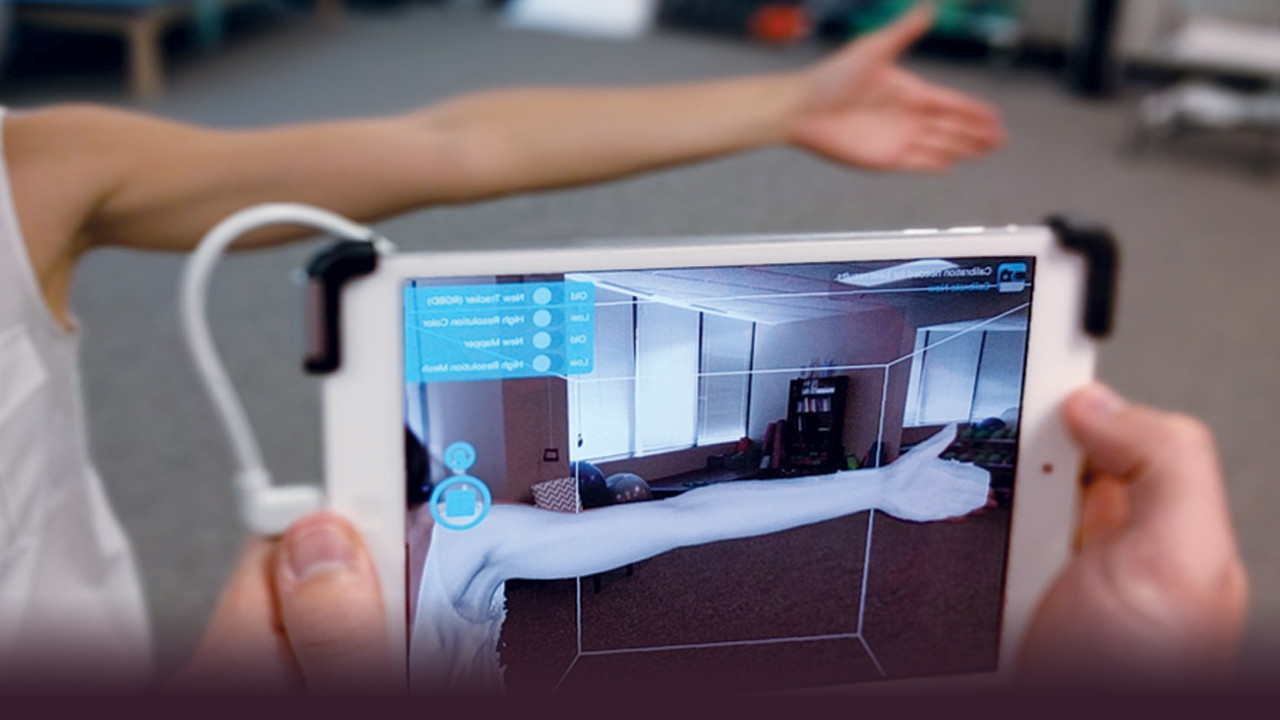Spying on swelling
Startup LymphaTech redefines state-of-the-art imaging
The cruelty of cancer is felt in so many ways.
One of these is a legacy disease stemming from treatment — lymphedema.
Lymph nodes removed through surgery or damaged by radiation and chemotherapy hinder the body’s ability to drain fluid. The result is localized swelling, or lymphedema. Half of all people with breast cancer get it, as do the vast majority of patients with neck cancer.
Cancer treatment isn’t the sole cause. Some people are born with lymphedema. In remote parts of the world, it’s brought on by worm larvae migrating to the lymphatic system after being deposited into the skin by a mosquito — a biological progression that often promotes the massive swelling and hardening of the skin known as chronic lymphatic filariasis.

Lymphedema is a life sentence, as no cure exists. But it can be held in check, and a startup out of Georgia Tech called LymphaTech stands ready to help do just that.
LymphaTech offers a faster, far more precise way to gauge the swelling from lymphedema. “The current state of the art is an ordinary tape measure,” explains Mike Weiler, CEO. “But if two different people measure swollen limbs with a tape measure, the measurements won’t be the same. It’s just not reliable. So we’re using 3-D imaging that precisely calculates geometric changes in limbs that undergo swelling.”
This added exactness — indeed, the technology was validated to be 99 percent accurate when compared to the gold standard of water displacement volumetry — is more than a convenience. It informs the crucial fitting of compression garments that help reduce the swelling. And for a clinical trial funded in part by the Gates Foundation, LymphaTech’s imaging is adding high precision to the monitoring of medications for people suffering from lymphatic filariasis.
The trajectory for LymphaTech is something to behold. In 2013, Brandon Dixon, an associate professor of mechanical engineering, received a $2 million NIH grant to apply a “technology approach” to the study of lymphatic diseases. He and Weiler also participated in the National Science Foundation’s I-CORPS program, which helps engineers and scientists accelerate their basic research so that it benefits more people.

Mike Weiler was a Ph.D. candidate in biomedical engineering, working in Dixon’s lab. He teamed up with four other students from Georgia Tech and Emory University’s College of Law as part of the joint TI:GER program, (Technological Innovation: Generating Economic Results). The team spent two years talking with doctors and clinicians about lymphedema and how a new technology might somehow improve patient care.
Their idea: Use commercially available 3-D imaging to measure the circumference and volume of limbs.
Their test technology: A Microsoft X-Box Kinect camera.
“It was the best depth sensor at the time for your money,” Weiler says.
He and LymphaTech co-founder Nate Frank then applied for a venture development grant from the Georgia Research Alliance to create a proof of concept. In partnership with Georgia Tech, the team won approval in 2015, developed software and used the X-Box Kinect to scan 150 people with lymphedema. The results were highly encouraging.
“The Phase 1 grant from GRA was the most valuable funding,” Weiler says. “It allowed us to take the idea and create an experimental prototype, which we tested at several clinical sites. That testing helped us modify the algorithms to work with a more precise hand-held scanner and tablet.”

This summer, LymphaTech began an initial rollout of its clinical device in the U.S., and its participation in the Gates Foundation-funded global clinical trial started earlier this year.
Moreover, the market is vast and wide-open: Lymphedema and lymphatic diseases affect more Americans than AIDS, Parkinson’s, multiple sclerosis and muscular dystrophy combined. And lymphedema can be reversed if it’s spotted early. “People with cancer who have routine screenings in their follow-up to oncology treatment are more likely to catch lymphedema early,” Weiler says. “The LymphaTech device can be used at home, making it an ideal screening protocol.”
Beyond early detection after cancer treatment, the company’s upcoming role in helping those suffering from elephantiasis and lymphatic filariasis means “we’re shifting toward helping more than 100 million people worldwide,” Dixon says.
While optimistic, the team remains grounded in reality, acknowledging that challenges lie ahead. “A device like this is not a standard protocol in hospitals,” co-founder Nate Frank says. “Clinicians have been very receptive because they know we’re solving a fundamental problem. But we’ll also have to show how this is revenue-generating in healthcare, and it will take some time to get the word out.”
But LymphaTech is buoyed by the fact that it offers a first-of-its-kind application. The technology is accurate and reliable. It can be used anywhere. It addresses a critical need. And it’s fast – measurements can be taken in under two minutes.
All of which means, the company’s value is crystal clear. Just like the measurements it makes.

